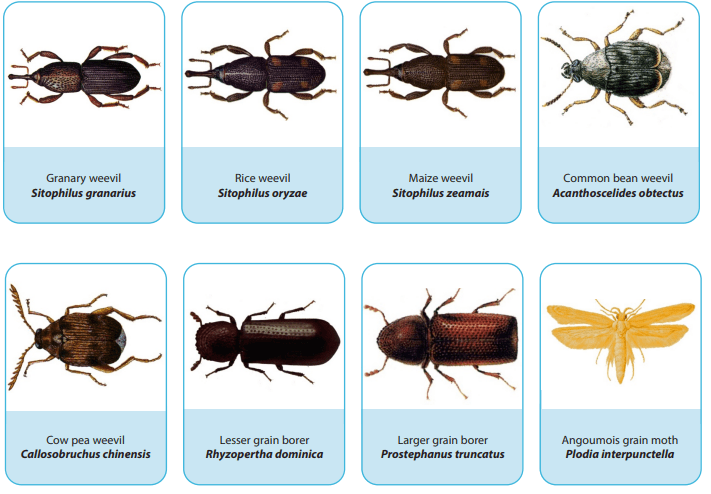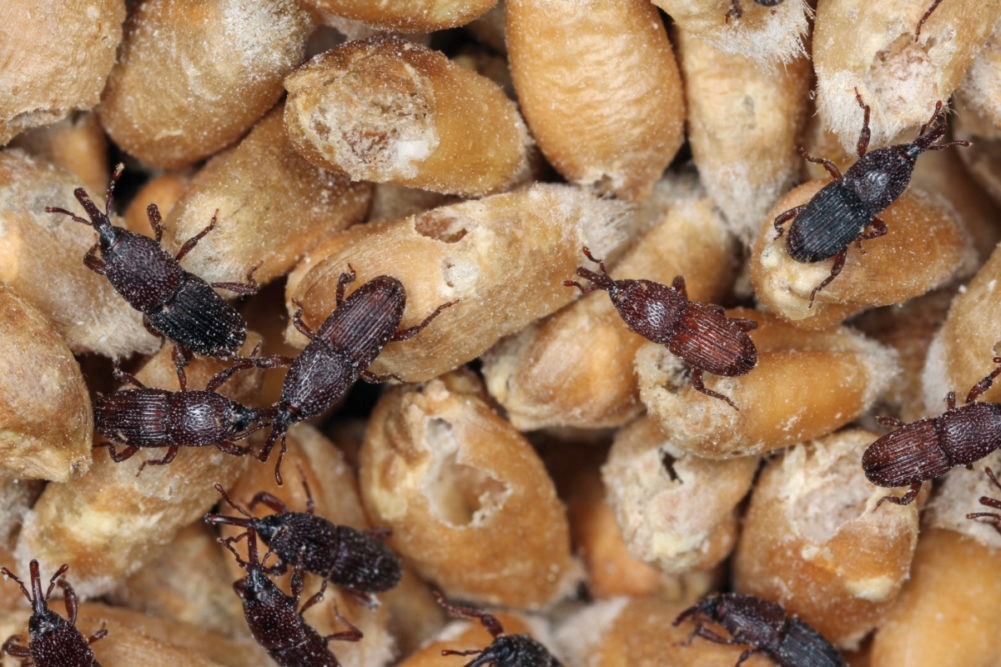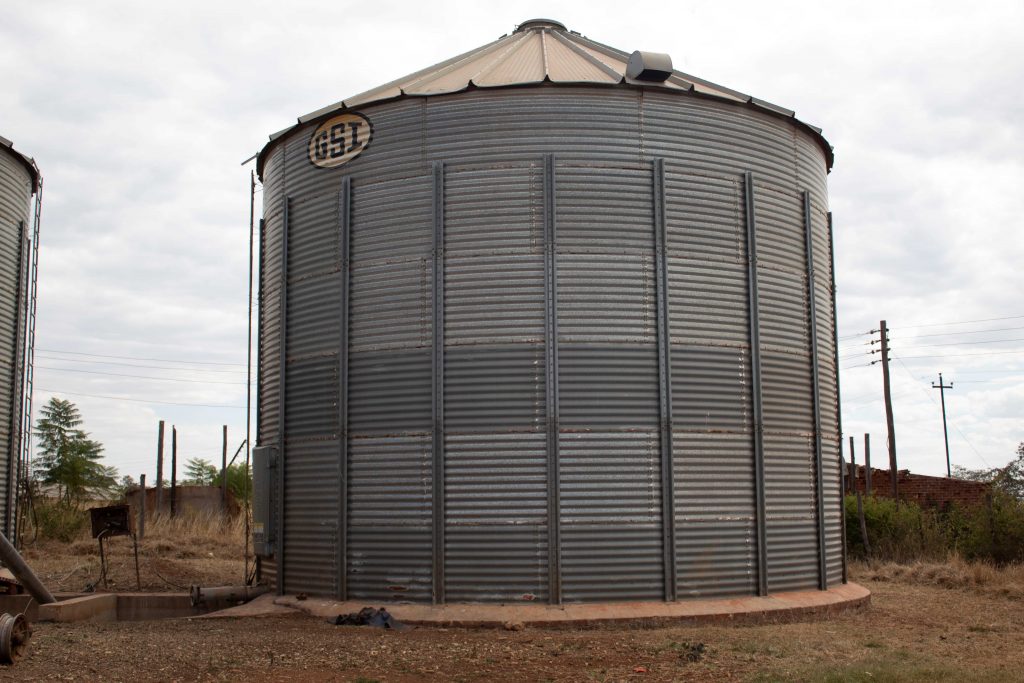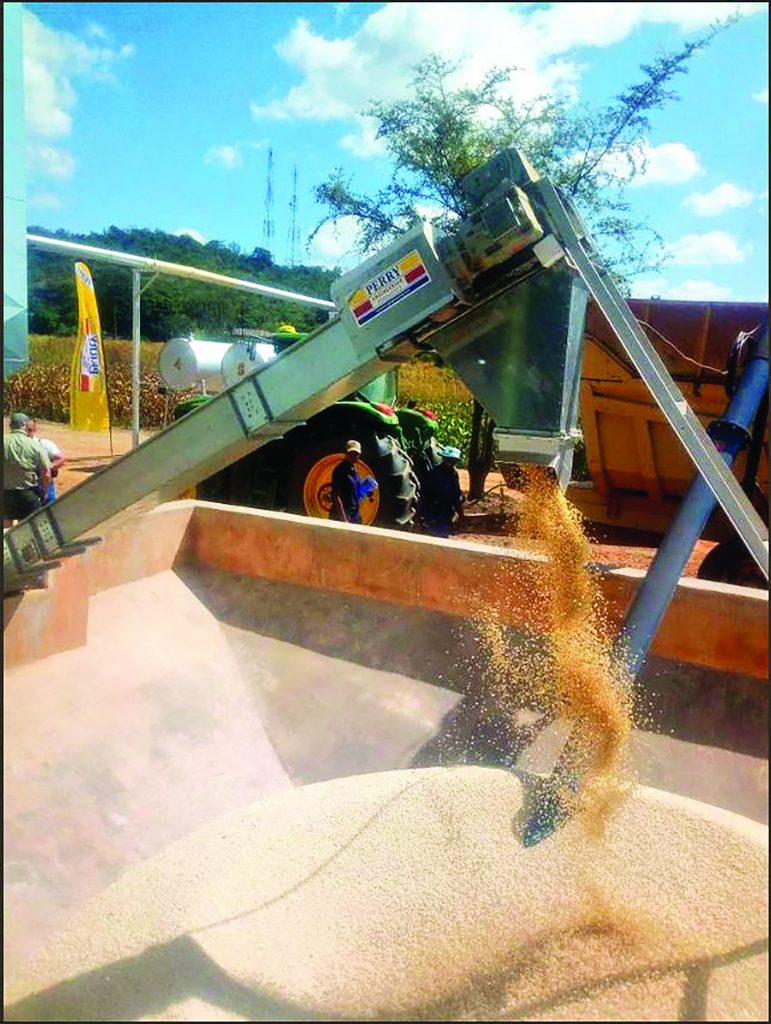Guard Your Yields Jealously
By Dr Nyasha Chiuraise. Plant pathologist. SeedCo Ltd and Wendy Madzura. Head of Agronomy. SeedCo Ltd
Grain pests are any live insects that feed and damage harvested stored grain. These include grain weevils, grain borers and grain moths which cause damage to grain such as maize, soybean, wheat, barley, rice, sorghum, common bean, millets and cowpeas.
Examples of Grain PestsThe majority of stored grain pests belong to the order of Coleoptera and Lepidoptera that accounts for 60 and 10% respectively. Coleoptera which means modified front wings that serve as protective covers for the membranous hind wings is an order of insects that includes beetles. Examples of includes granary weevil (Sitophilus granarius), Rice weevil (Sitophilus oryzae), Maize weevil (Sitophilus zeamais), Common bean weevil (Acanthoscelides obtectus), Cowpea weevil (Callosobruchus chinensis), Lesser grain borer (Rhyzopertha dominica) and Larger grain borer (Prostephanus trucatus). Lepidoptera which means ‘scaly wings’ is an order of insects that includes butterflies and moths, examples include Angoumois grain moth (Plodia interpunctella) Figure 1.

Figure 1: Images of the most important grain insects
Economic and Nutritional Damage of Grain Pests
Insect pests possess a major threat to grain production and are also responsible for both direct and indirect losses of grain both in the field as well as in the storage. Pre-harvest losses are estimated to be 15 -100% and between 10 – 60% post-harvest losses of stored grains. Stored grain pests generally feed on grain, bore into the kernel and then destroy the germ portion, cause heat and then cause deterioration in stored grain products thus resulting in huge losses mainly due to nutritional depletion, seed germination viability and reduction in market value. Grain pest damage also cause contamination by the production of enterotoxins and mycotoxins that can be harmful to human health. Hence the loss caused by insect pests is not in terms of quantity but mostly in terms of quality. Qualitative loss in stored grain is caused by chemical changes in proteins, carbohydrates, amino acids which negatively affect the nutritional value of grains.

Prevention Measures and Control Chemicals
The combination of meticulous grain hygiene plus well-managed aeration cooling generally overcomes 85 per cent of storage pest problems. For grain storage, three key factors provide significant gains for both grain storage pest control and grain quality – hygiene, aeration cooling and correct fumigation. Fumigants containing aluminium phosphide, such as Phostoxin tablets can be used to fumigate grain in a tightly sealed containers, silos or rooms. Caution should be taken when working with Phostoxin tablets as they are extremely toxic to humans and livestock. For short grain treatment required for human consumption, a less toxic powder treatment of Actellic Gold Dust (Pyrimiphos-methyl + Thiamethoxam) can be mixed with grain in sacs/bags to control weevils and borers. For long term storage of seed not meant for human and livestock consumption, potent chemicals such as Malathion and Carbaryl are used for control of a wide range of insects.

Prevent, Monitor, Detect and Remove – Resolving pest issues as quickly as possible will be beneficial in the long run, as infestations are naturally more difficult to remove. Being proactive while working on a pest management program will help prevent pests and protect your products, business and bottom line.

